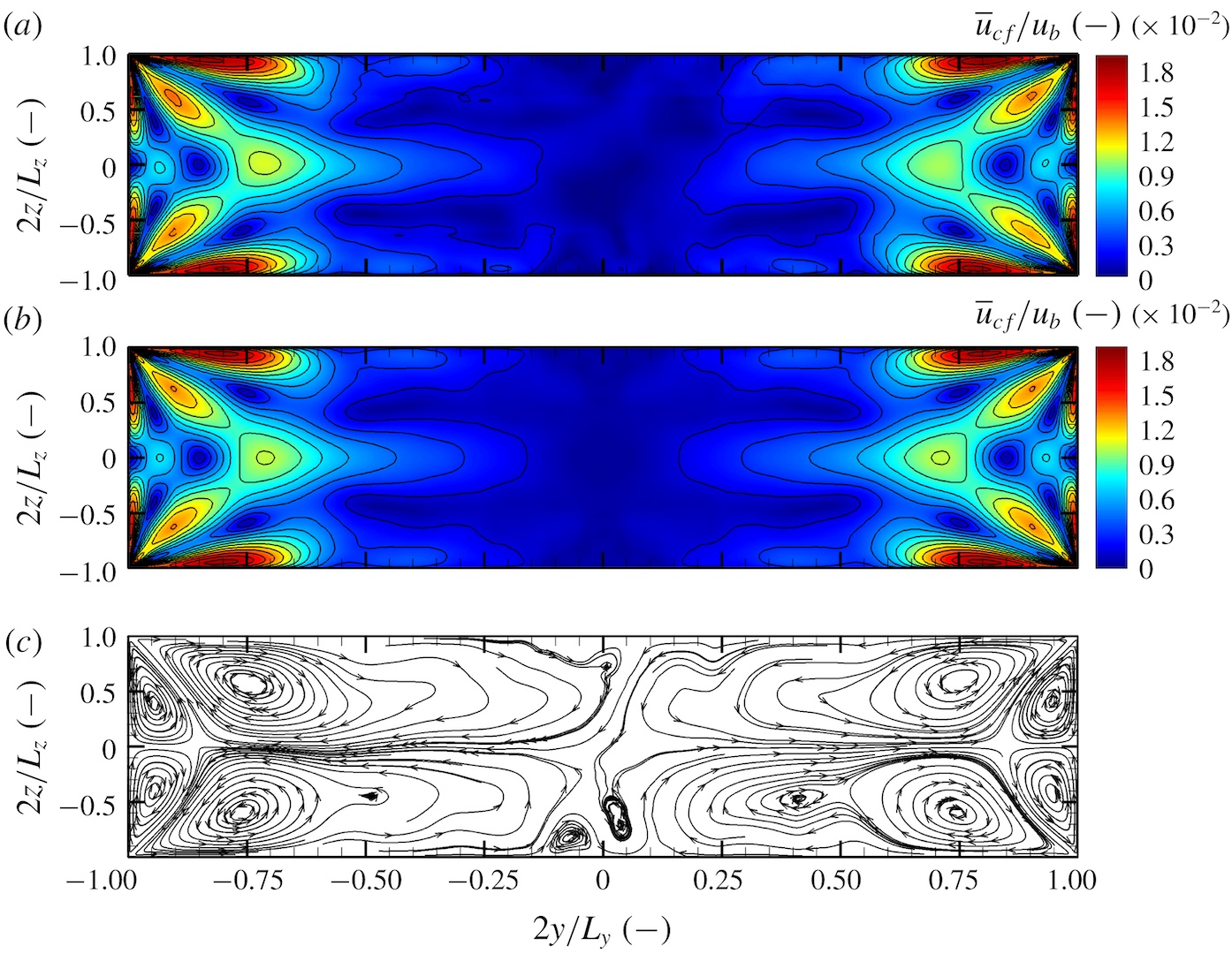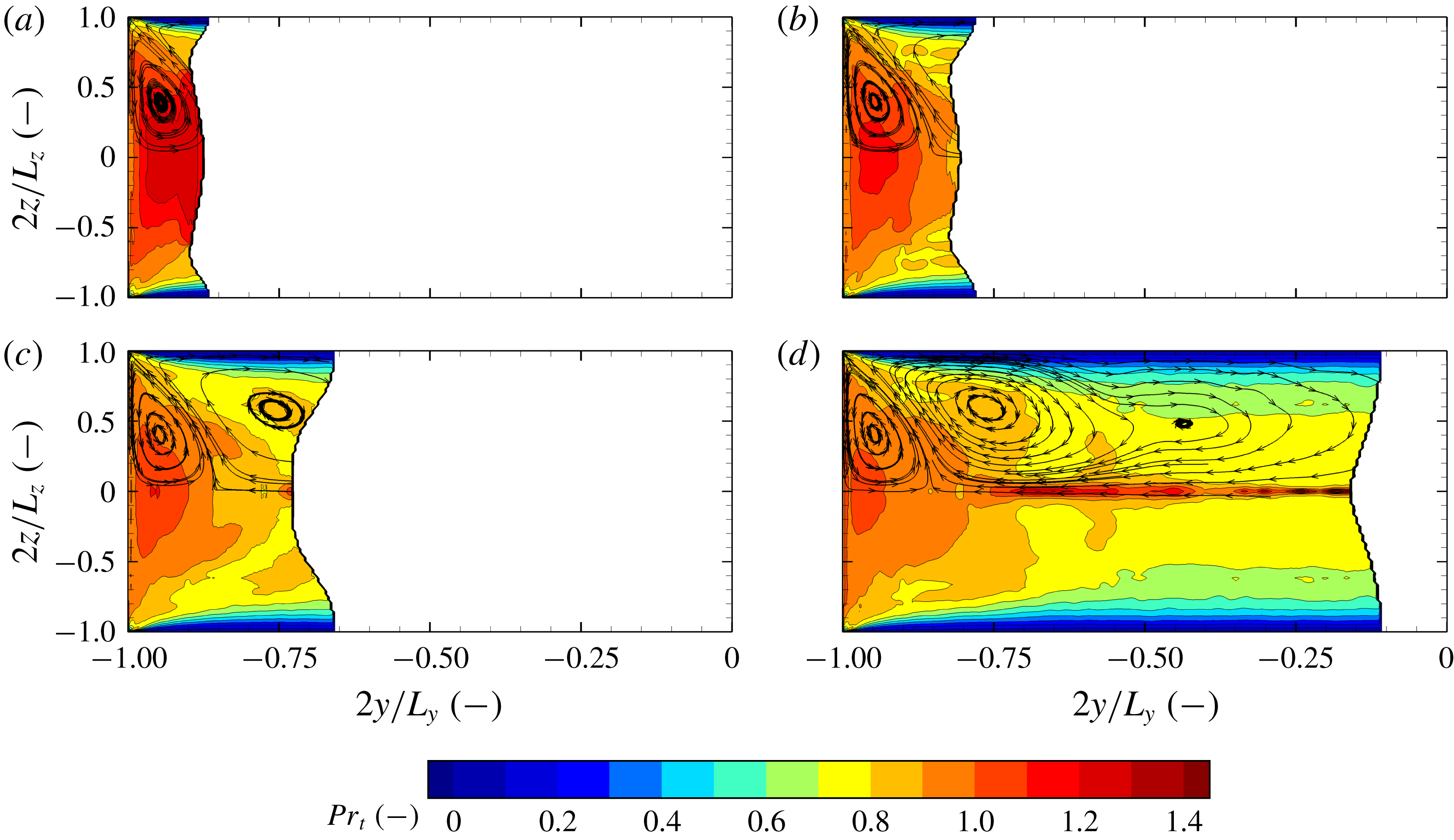Kaller, T., Pasquariello, V., Hickel, S., Adams, N.A. (2019)
Journal of Fluid Mechanics 860: 258-299. doi: 10.1017/jfm.2018.836
We present well-resolved large-eddy simulations of turbulent flow through a straight, high aspect ratio cooling duct operated with water at a bulk Reynolds number of Reb = 110 000 and an average Nusselt number of Nu = 371. The geometry and boundary conditions follow an experimental reference case and good agreement with the experimental results is achieved.
The current investigation focuses on the influence of asymmetric wall heating on the duct flow field, specifically on the interaction of turbulence-induced secondary flow and turbulent heat transfer, and the associated spatial development of the thermal boundary layer and the inferred viscosity variation. The viscosity reduction towards the heated wall causes a decrease in turbulent mixing, turbulent length scales and turbulence anisotropy as well as a weakening of turbulent ejections. Overall, the secondary flow strength becomes increasingly less intense along the length of the spatially resolved heated duct as compared to an adiabatic duct. Furthermore, we show that the assumption of a constant turbulent Prandtl number is invalid for turbulent heat transfer in an asymmetrically heated duct.




